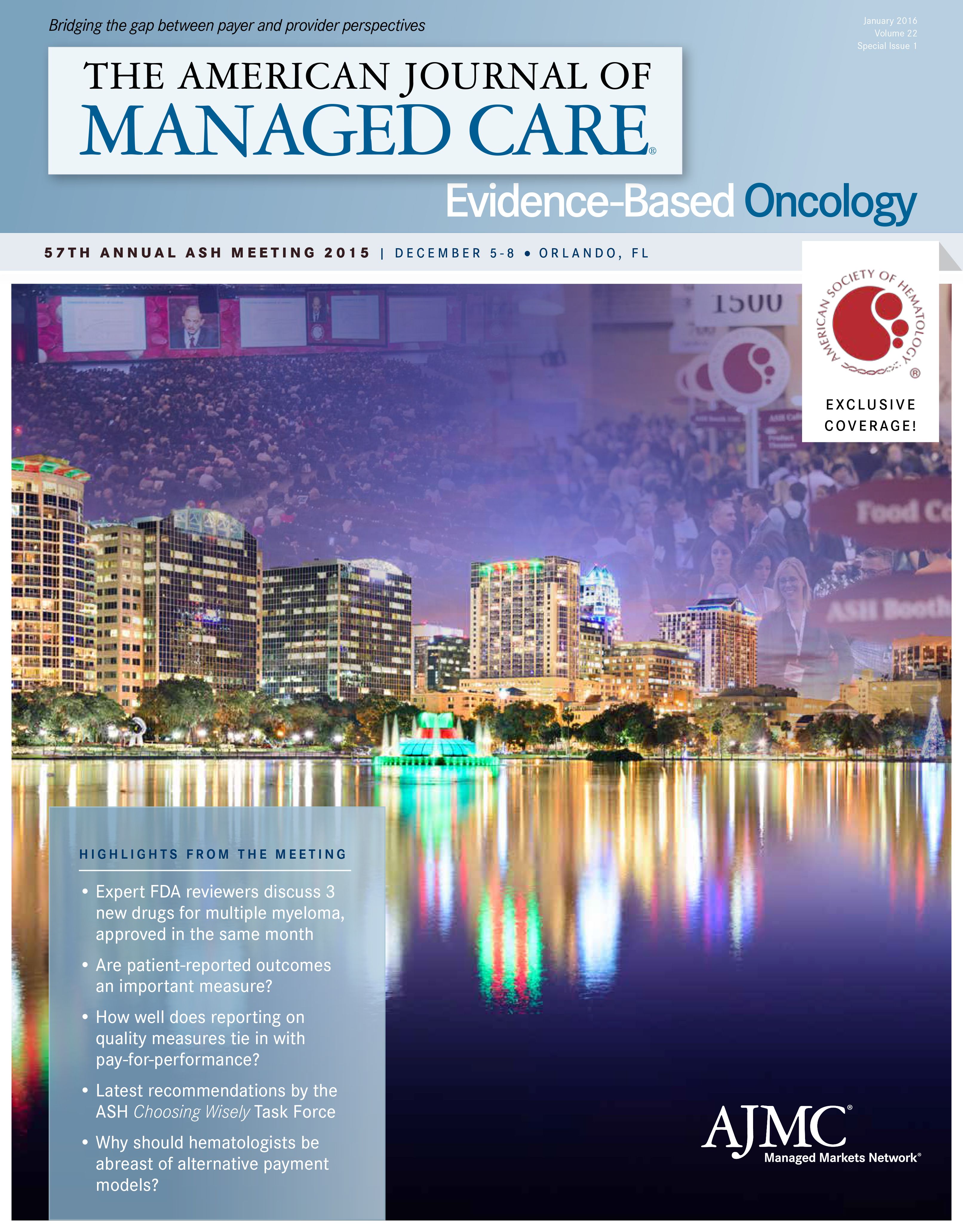- Center on Health Equity & Access
- Clinical
- Health Care Cost
- Health Care Delivery
- Insurance
- Policy
- Technology
- Value-Based Care
Insurance Status Determines OS in Patients With CML
Results presented at the annual meeting of the American Society of Hematology found that many patients diagnosed with chronic myeloid leukemia may not have access to or receive appropriate care, in part due to their insurance coverage.
Although survival among patients diagnosed with chronic myeloid leukemia (CML) has greatly improved with the advent of tyrosine kinase inhibitors (TKIs), issues with access to care—including medication cost and adherence—can reduce therapeutic efficiency. Ashley M. Perry, from Massachusetts General Hospital in Boston, presented a study that evaluated overall survival (OS) as an outcome of insurance coverage for patients being treated for CML.1 Perry indicated that approved TKIs in the United States cost anywhere between $92,000 and $138,000 annually and this high cost may influence treatment decisions or result in poor adherence among patients with cancer.
Study results have shown that the uninsured or Medicaid enrollees are highly vulnerable to poor outcomes when diagnosed and treated for cancer. One such study, published in the Journal of Clinical Oncology, examined the association of insurance status in patients younger than 64 years who were diagnosed with the 10 most deadly cancers.2 The uninsured and those on Medicaid presented with more advanced disease, were less likely to receive cancer-directed surgery and/or radiation therapy, and experienced worse survival, the study reported, stressing the importance of insurance coverage in this population of patients.
For their study, Perry and colleagues used the Surveillance, Epidemiology, and End Results Program (SEER) database to perform a population-based analysis to determine if insurance status at the time of CML diagnosis influenced patient outcomes. Patients 15 years or older, diagnosed with CML between 2007 and 2012 and with documented insurance status at diagnosis, were categorized as either private insurance, Medicaid coverage, or uninsured. Patients with unknown insurance status at diagnosis were excluded, as were uninsured patients older than 65 years.
Between 2007 and 2012, 5784 patients were diagnosed with CML and had insurance status documented at diagnosis. A total of 3636 patients were included in the study in the 15-to-64 age group and 2148 in the 65-and-over age group. Of patients aged 15 to 64 years, uninsured and Medicaid patients were younger, more often nonwhite race and Hispanic ethnicity, and less often married, the study results found. Over age 65, Medicaid patients were more often female, nonwhite race and Hispanic ethnicity, and less likely to be married. Additionally, Perry shared that patients in the 15-to-64 age group who were insured were from counties where the unemployment rate was lower, very few people lived below the poverty line, and most people had at least a high school education. The Medicaid population, were mainly from counties with higher education and very few individuals living below the poverty line; however, there was no association observed with unemployment.
With a median follow-up of 32 months, patients in the 15-to-64 age group, who were uninsured or had Medicaid, presented with worse survival compared with insured patients (5-year OS: uninsured, 72.7%; Medicaid, 73.1%; insured, 86.6%; P <.0001). For patients over age 65, the analysis found no difference in 5-year OS between patients with Medicaid and those with other insurance (40.2% vs 43.4%; P = .0802).
In the 15-to-64 age group, compared with insured patients, there was increased mortality among patients who were uninsured (hazard ratio [HR], 2.156; P <.0001) or on Medicaid (HR, 1.972; P <.0001). Additionally, survival was poor with increased age, among males, and among those who were single. For patients over age 65 at diagnosis, age was primarily associated with increased mortality.
EBO
REFERENCES
1. Perry AM, Zou T, Brunner AM, Neuberg DS, Fathi AT. The impact of insurance status at diagnosis on overall survival in chronic myeloid leukemia: a population-based analysis. American Society of Hematology website. https://ash.confex.com/ash/2015/webprogram/Paper85250.html. Accessed December 18, 2015.
2. Walker GV, Grant SG, Guadagnolo BA, et al. Disparities in stage at diagnosis, treatment, and survival in nonelderly adult patients with cancer according to insurance status. J Clin Oncol. 2014;32(28):3118-3125.
Perry concluded that despite highly effective therapies, insurance status can significantly impact outcomes. She noted, however, that the SEER database has certain limitations in terms of the data that is recorded, including the absence of comorbidity data. Despite the availability of highly effective therapies for CML, these findings suggest that many patients may not have access to or receive appropriate care, in part due to their insurance coverage.

